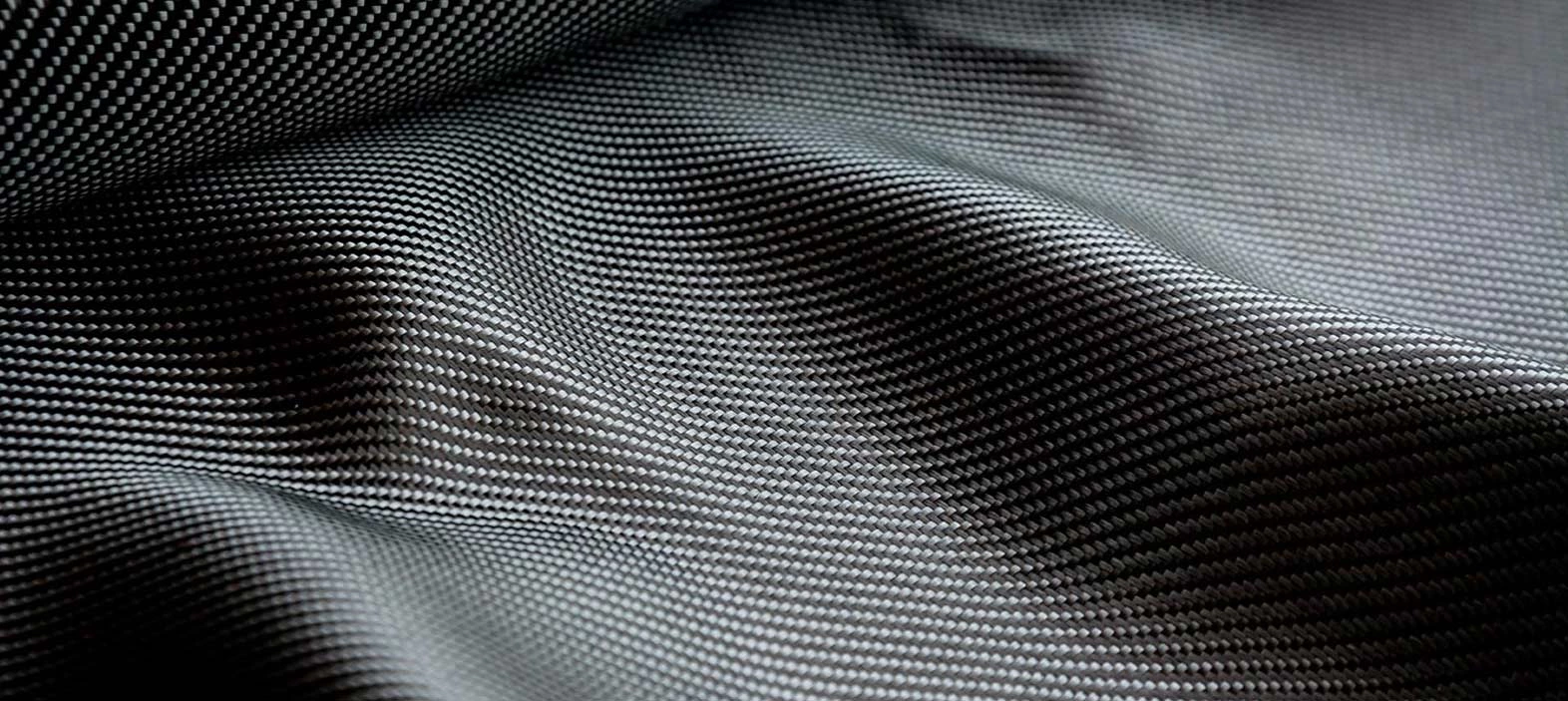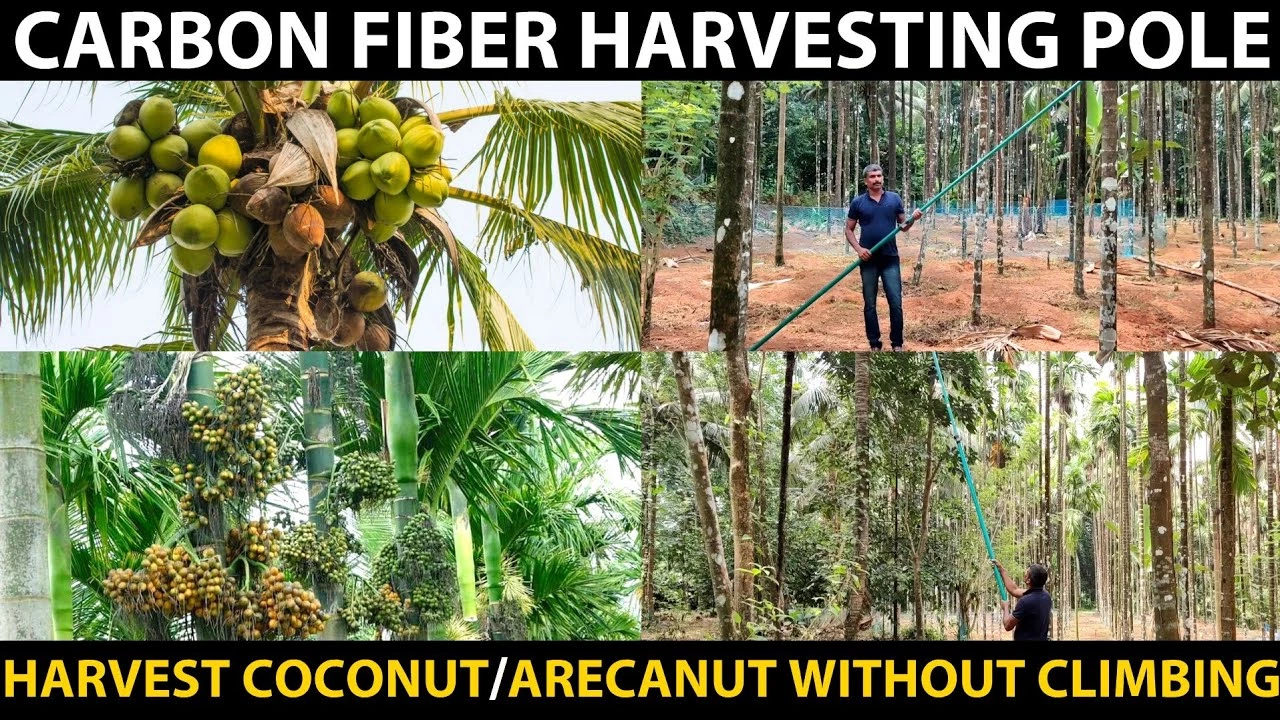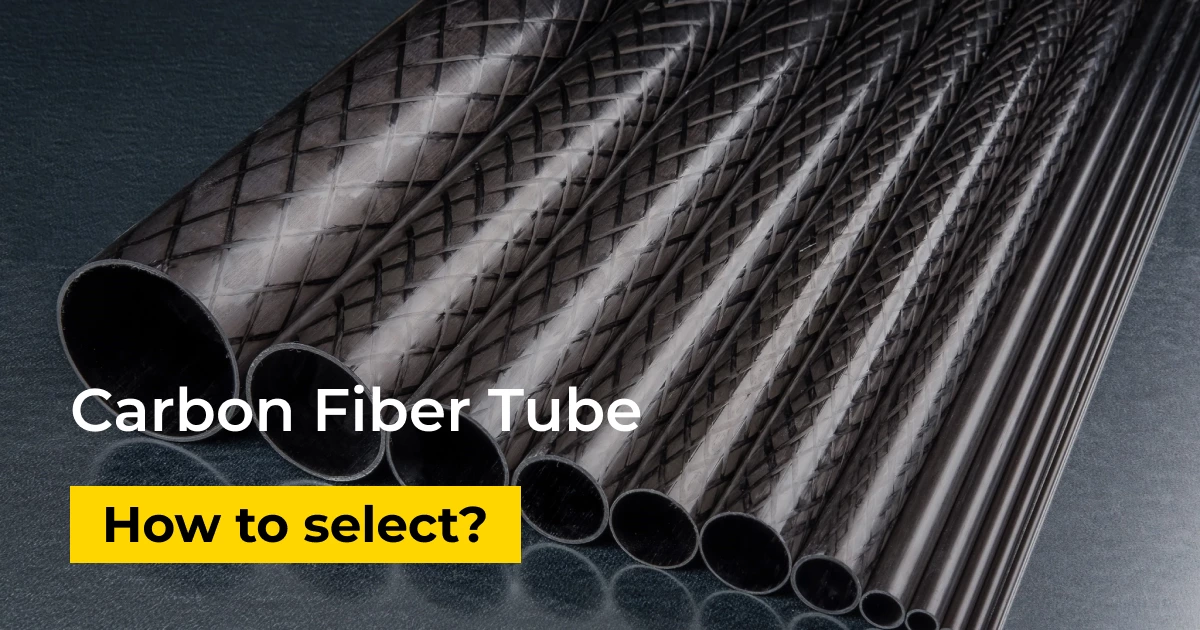Types Of Carbon Fiber Materials and How is Carbon Fiber Made?
Carbon fiber is a durable, rigid, and lightweight material made from carbon fibers that are heated and stretched into long, thin strands before being woven or braided together into a fabric. It is widely used in industries such as aerospace, marine, automotive, and sporting goods due to its combination of strength and lightness.
What is Carbon Fiber?
Carbon fibers, also referred to as CF or graphite fiber, have a diameter ranging from 5 to 10 micrometers (0.00020–0.00039 in) and are composed mainly of carbon atoms. With a strength five times greater than steel and twice as stiff, carbon fibers offer numerous advantages, such as high stiffness, tensile strength, strength-to-weight ratio, chemical resistance, high-temperature tolerance, and low thermal expansion. Due to these exceptional properties, carbon fiber is widely used in aerospace, civil engineering, military, racing, and other competitive sports. However, these benefits come at a higher cost compared to other fibers, including glass, basalt, or plastic fibers.
Carbon fibers are formed by bonding carbon atoms together in crystals that align parallel to the fiber's length, resulting in a high strength-to-volume ratio. They can be used alone or woven into a fabric, with various weave options available, including plain and twill.
Carbon fibers are commonly combined with other materials, such as graphite, to produce reinforced carbon-carbon composites with exceptional heat tolerance. They are often mixed with a plastic resin and baked to create a carbon-fiber-reinforced polymer, known as carbon fiber, which has a high strength-to-weight ratio and is incredibly stiff but slightly brittle.
Carbon fiber-reinforced composites have a wide range of applications, including the manufacturing of aircraft and spacecraft parts, racing car bodywork, golf club shafts, bicycle frames, fishing rods, vehicle springs, sailboat masts, and other components that require both light weight and high strength.
Properties of Carbon Fiber
Carbon fiber is a superior and more durable alternative to various metals in a wide range of applications. Its exceptional characteristics make it ideal for use in structural, automotive, aerospace, and specialty industries. Now, let's examine these remarkable properties in more detail.
Electrically Conductive
Carbon fiber filaments are known for their electrical conductivity and are often used in applications such as lightning strike protection. However, this conductivity can lead to galvanic corrosion in fittings, which can be mitigated through proper installation methods.
High Strength-to-Weight Ratio
One of the defining characteristics of carbon fiber is its impressive strength-to-weight ratio. Carbon fiber is known for being incredibly strong, rigid, and lightweight. In fact, materials are considered to have a high strength-to-weight ratio if they are both strong and lightweight. Other materials with high strength-to-weight ratios include aluminum, titanium, magnesium, carbon and glass fiber, and high-strength steel alloys.
Corrosion-resistant and Chemically Stable
While carbon fiber is durable, it's crucial to be aware of possible damage from sunlight to the commonly used epoxy material in its composites. Additionally, other matrices containing carbon fiber may also be reactive.
Fatigue Resistance
Carbon fiber has a higher level of fatigue resistance and damage tolerance compared to other composite materials, such as fiberglass. When subjected to increasing stress cycles, the material's stiffness decreases, revealing its tensile fatigue damage. It is also worth noting that when cyclic stresses align with the fiber orientation, failure is not a possibility.
Rigid or Stiff
Measure the rigidity or stiffness of a material using its Young modulus, which defines how much it deforms under stress. Carbon fiber-reinforced plastic is over 4 times stiffer than glass-reinforced plastic, 20 times stiffer than pine, and 2.5 times stiffer than aluminum.
Brittle
The layers in the fiber are due to strong covalent bonds. These sheet-like aggregations easily allow cracks to propagate, and when the fibers are bent, they fail at low strain.
Tensile Strength
The carbon fiber's tensile strength is not always consistent due to internal flaws, leading to varying levels of stress needed for failure. Small strains have the potential to cause failure in the material.
Non Poisonous and X-Ray Permeable
Carbon fiber composite materials are non-toxic and transparent to X-rays, making them ideal for medical purposes such as prosthetics, implants, tendon repair, x-ray accessories, surgical instruments, and more.
Low Thermal Expansion
The low thermal expansion of carbon fiber is ideal for situations where precise dimensional stability is needed, as carbon fiber experiences minimal changes in size due to temperature fluctuations compared to metals. This makes it a top choice for industries that value accuracy and precision.
Non Flammable
An example of integrating carbon fiber into firefighting protective clothing is the use of nickel-coated fibers. Its chemical inertness makes it suitable for use in situations involving fire and corrosive agents.
How is Carbon Fiber Made?
The manufacturing process of carbon fiber involves both chemical and mechanical procedures. Here is a comprehensive explanation of the production process for carbon fiber:
Step 1: Preparing Raw Materials or Precursor
For the production of carbon fiber, it is essential to utilize an organic polymer precursor. This precursor refers to the raw material used to create carbon fiber, with approximately 90% being derived from polyacrylonitrile (PAN). The remaining 10% is made up of raw materials such as rayon or petroleum pitch, classified as organic polymers consisting of long molecular chains bound together by carbon atoms.
Step 2: Stabilizing and Carbonizing Fibers
Prior to the carbonization process, the precursor is transformed into long fibers. This transformation involves a chemical alteration of the fibers' atomic bonding to make it more thermally stable in a ladder structure. The fibers are heated in air at 390-590°F (200-300°C) for 30-120 minutes, which promotes the uptake of oxygen molecules from the air and subsequently rearranges the atomic bonding pattern.
After stabilizing the fibers, they are exposed to very high temperatures (1,830-5,500° F or 1,000-3,000° C) for a few minutes in an oxygen-free furnace. This prevents the fibers from burning, as high temperatures can remove non-carbon atoms from the fibers. As a result, tightly bonded carbon crystals form and align parallel to the fiber's long axis.
Step 3: Treating the Fiber Surface
After going through the carbonization process, the fibers' surface lacks proper bonding with the composite materials' epoxies and other substances. To address this issue, the fibers' surface is oxidized, resulting in better bonding properties. The introduction of oxygen atoms not only improves chemical bonding but also etches and roughens the surface for enhanced mechanical bonding.
To alter the fibers, they can be exposed to a variety of gases and liquids including air, carbon dioxide, ozone, sodium hypochlorite, and nitric acid. Another method is to electrostatically coat them by placing them in a bath with different conductive substances and making them the positive terminal.
Step 4: Sizing the Fibers
Once surface treatment is complete, the fibers are coated with protective materials to safeguard against damage during winding or weaving. This process, known as sizing, involves choosing coating materials that are suitable for the adhesive used in making composite materials. The most commonly utilized coating materials comprise of various substances such as epoxy, polyester, nylon, urethane, and more.
After being coated, fibers are coiled onto bobbins and then placed into a spinning machine, where they undergo a twisting process to form yarns of varying sizes. This process utilizes scientific methods to create high-quality, professional-grade yarns. The resulting yarns are then ready to be used in a variety of applications.
Brief History and Background of Carbon Fiber
In the 1800s, various inventors successfully utilized carbon fibers in the production of light bulbs, with Joseph Swan and Thomas Edison being two notable figures. Using high-temperature baking techniques, these inventors were able to create an all-carbon filament, which was then heated by electricity to produce a bright light. Soon, Lewis Latimer improved upon this concept, producing a reliable carbon wire filament that was used in the first incandescent light bulbs.
In 1958, Roger Bacon discovered high-performance carbon fibers at the Union Carbide Parma Technical Center in Cleveland, Ohio. These fibers are created by heating strands of rayon until they are carbonized. Initially, the brittle nature of carbon fiber limited its use, but advancements in fabrication have greatly increased its effectiveness. With a tensile strength of 4,000 MPa and a modulus of 400 GPa, carbon fiber is now utilized in a wide range of applications.
Types of Carbon Fiber
Carbon fibers can be categorized based on the type of raw materials used, their mechanical properties, and the final heat treatment temperature.
Types Based on Raw Materials
There are two categories of carbon fiber classified by the raw materials used.
Pitch-based Carbon Fiber
Pitch-based carbon fiber is a unique type of fiber that is created through the carbonization of oil or coal pitch precursor. This particular fiber boasts a variety of properties, spanning from low to ultra high elastic modulus. These fibers, known for their exceptional stiffness, are commonly used in applications requiring high thermal or electric conductivity.
PAN-based Carbon Fiber
PAN-based carbon fiber is generated through PAN (Polyacrylonitrile) precursor carbonization, giving it exceptional tensile strength and elastic modulus. This makes it a popular choice for structural material composites in aerospace, industrial, and sports/recreational applications.
Types Based on Mechanical Properties
Ultra High Elastic Modulus Type (UHM)
The UHM type, also known as ultra high elastic modulus, boasts a tensile elastic modulus of at least 600 GPa and a tensile strength of 2,500 MPa or greater. This ultra high modulus carbon fiber is exclusively utilized in the most advanced engineering applications, such as satellites, drones, and competition sports equipment, where exceptional stiffness per unit weight is essential.
Low Elastic Modulus Type (LM)
The LM type has an elastic modulus below 200 GPa and a tensile strength below 3,500 MPa, making it suitable for various applications.
Intermediate Elastic Modulus Type (IM)
IM is an intermediate elastic modulus type, with a tensile elastic modulus range of 280 to 350 GPa and a tensile strength of at least 3,500 MPa. It is commonly used in industries that demand high performance, including aerospace, automotive, and sports equipment manufacturing.
High Elastic Modulus Type (HM)
The high elastic modulus type, or HM, is characterized by a tensile elastic modulus of 350 to 600 GPa and a tensile strength of at least 2,500 MPa. This type of carbon fiber, commonly used in aerospace, automotive, and advanced sporting goods, allows for the production of lightweight components while maintaining strength.
Standard Elastic Modulus Type (HT)
The commonly known HT elastic modulus, also referred to as the standard type, is the subject of discussion. It has a tensile elastic modulus range of 200-280 GPa and a minimum estimated tensile strength of 2,500 MPa. This material is suitable for a variety of applications, including automotive components, sporting equipment, wind turbines, and aircraft structures.
Types Based on the Final Heat Treatment Temperature
Regarding the final heat treatment temperature, carbon fibers are categorized as:
Low-heat-treatment Carbon Fibers (LHT)
LHT carbon fibers undergo a low-heat treatment process with a maximum temperature of 1000°C, resulting in a lower modulus and strength.
Intermediate-heat-treatment Carbon Fibers (IHT)
IHT carbon fibers undergo a final heat treatment at or above 1500°C, making them known for their strength and durability. These fibers are commonly used in high-strength applications.
High-heat-treatment Carbon Fibers (HTT)
When discussing high-modulus type fiber, it is important to note that high-heat-treatment carbon fibers (HTT) must undergo a final heat treatment temperature of over 2000°C.
Types of Carbon Fiber Weaves
When it comes to carbon fiber, there are a variety of weaves to choose from such as twill, satin, and plain. These weaves are commonly used in carbon fiber fabric.
Satin Weave
Throughout history, the satin weave has been used to produce silk fabrics with superior draping abilities and a flawless, seamless look. Its high formability allows composites to easily conform and encase complex shapes. However, this fabric lacks stability due to its pliability. The most common types of satin weaves used in textile production are the 4 harness satin (4HS), 5 harness satin (5HS), and 8 harness satin (8HS). As the number of satin weaves increases, so does formability, but at the expense of fabric stability.
Twill Weave
Twill weave offers greater pliability and can conform to intricate contours, making it a superior choice compared to harness satin weave in terms of fabric stability. However, it falls short of plain weave in terms of performance. In a twill weave, each tow strand alternately goes over and under a set number of tows, resulting in a distinctive diagonal arrowhead pattern referred to as a "twill line".
Plain Weave
The plain weave carbon fiber sheet has a symmetrical look with a small checkerboard design. The fibers are intertwined in an over/under pattern, which greatly contributes to the sheet's stability. Fabric stability is defined as a fabric's ability to maintain its weave angle and fiber orientation, and the small distance between interlaces in the plain weave makes it highly stable. This weave is best suited for simpler shapes like two-dimensional curves, tubes, and flat sheets, as it is not as flexible for complex contours like other weaves.
Applications of Carbon Fiber
Carbon fiber offers unparalleled benefits that make it a sought-after material for cutting-edge applications in various industries. Discover its wide range of uses and applications in this comprehensive overview.
Automotive – As costs decrease, carbon fiber is becoming more common in premium and racing vehicles to decrease weight while maintaining strength and rigidity. Applications include body panels, hoods, roofs, spoilers, and structural components. Carbon fiber can also contribute to improved fuel efficiency and handling. Formula 1 race cars heavily depend on carbon fiber materials.
Aerospace – Carbon fiber is commonly utilized in the aerospace industry for its exceptional strength-to-weight ratio, stiffness, and resistance to corrosion. It is frequently found in aircraft components such as fuselages, wings, helicopter blades, rocket casings, and payload fairings. Utilizing carbon fiber in airplanes can decrease weight by up to 20%, making it a valuable material. However, one drawback is the potential for Barely Visible Impact Damage (BVID) and its impact on component safety, which can be difficult to detect and requires extensive training and testing.
Civil Engineering – When used as reinforcements, carbon fiber bars and cables can effectively strengthen concrete structures, replacing the traditional steel reinforcement with a lighter alternative. This results in an increased tensile strength and reduced weight for the overall structure. In addition, carbon fiber wraps and laminates can be used to reinforce structural elements such as columns and bridges.
Military – Carbon fiber has a long history of use in lighting on naval ships, but it has now become a versatile material utilized in various military applications such as missiles, drones, helmets, and tent posts. Its strength and lightweight properties make it a valuable asset for the military, providing easier transportation and significant energy savings.
Sports Equipment – Carbon fiber is a material that has become increasingly popular in high-end bicycles due to its lightweight design and performance-enhancing properties. It is also commonly used in other sports equipment, such as golf club shafts, tennis rackets, and hockey sticks. Beyond sports, carbon fiber is also utilized in various products such as hard hats, clothing, and protective gear. In fact, carbon fiber is a versatile material that serves a wide range of purposes, including applications in racing sports, where it is commonly used for helmets and shoes.
Medical Devices – Carbon fiber's biocompatibility and strength have resulted in its applications in orthopedic implants, prosthetic limbs, and MRI machines. By using carbon fiber-reinforced polymers, precision parts like bone plates can be manufactured, while maintaining transparency in X-ray images. Furthermore, carbon fiber prosthetic limbs offer a combination of durability, lightness, and comfort.
Consumer Electronics – Carbon fiber is commonly used in high-end consumer electronics, such as laptops, phones, tablets, tripods, and headphones, to enhance durability and reduce weight. The addition of carbon fiber device cases and structural components increases strength and improves heat dissipation. Its unique properties also make it a valuable material for products requiring electromagnetic transparency.
Summary
Carbon fiber is composed of tightly bound strands of carbon that create a highly resilient, incredibly strong, and extremely lightweight substance. Its superior strength-to-weight ratio, stiffness, and resistance to heat make it the perfect option for industries that require both lightness and strength, such as aerospace, medical, construction, sports, marine, and military fields. This special material allows for complex shaping and precise designing to maximize strength. Ultimately, it provides a significant advantage by significantly reducing weight without compromising durability.


